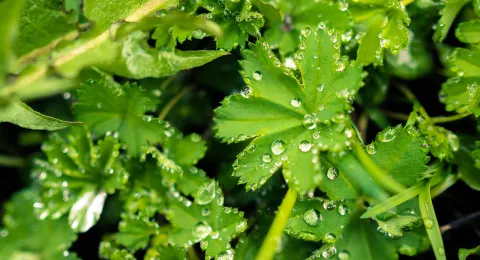Like the human fingerprint, the rings on the seal's fur always create a unique pattern. The patterns enable distinguishing one seal from another.
Pattern recognition methods are the most efficient way to identify seals. LUT University is developing such methods under Professor Heikki Kälviäinen's supervision.
"In practice, it's a matter of digital image processing. We construct a neural network and introduce an algorithm into it to recognise individual seals by combining image data", Kälviäinen explains.
The method is being developed in the context of the project "Towards sustainable coexistence of seals and humans" (EU-CBC CoExist). Identification data enables monitoring the number and range of seals in Lake Saimaa and Lake Ladoga and examining the seals' social interaction. The results will be utilised in the protection of the seals.
"The method is partly connected to the analysis of climate change. Mild winters are a serious threat to the breeding of the Saimaa ringed seal. Climate change is compared to the behaviour of the seals to see how they adapt to changing conditions."
LUT digitalises nature conservation
Identifying a specific individual requires hundreds of digitally analysed images of seals. In Finland, image data is produced by biologists from the University of Eastern Finland in fieldwork and by a couple of dozen trail cameras, which take pictures of seals in Lake Saimaa at regular intervals.
Only 400 ringed seals remain in Lake Saimaa. Hundreds of thousands of photographs have been taken of them. The seal population in Lake Ladoga consists of a few thousand seals, and the research project is starting their systematic photography.
"Ladoga is larger than Saimaa but has fewer locations frequented by seals. The project aims to ascertain where the Russian seals prefer to dwell."
Kälviäinen anticipates difficulties in recognising Ladoga seals, which are darker in colour than Saimaa ringed seals. The patterns on the coat also change shape as the seals move, which poses challenges. In addition, changing seasons affect the colour and thickness of the seal's fur.
Nevertheless, the method has proven functional. LUT's initial results from 2015 indicated that Saimaa ringed seals could be automatically identified. At that point, the analysis data consisted of a thousand images.
"So far, we have analysed 5500 images of 29 Saimaa ringed seals and have been able to recognise seals with 91.2% reliability. We believe it is entirely possible to identify seals in this way," Kälviäinen states.
Bans on net fishing in specific areas
A pattern recognition method distinguishing individual seals would enable real-time recognition. If cameras in the wild could recognise individual seals without delay, we could monitor the seal's movements and react to anomalies quickly. In addition, this would enable abandoning trackers attached to the seal's back, which cause the animal stress.
Location data would also help to establish a truce between seals and fishers.
"If we are aware of the seals' routes, we will be able to avoid them getting caught in fishing nets. The data will help to define specific areas for net fishing bans," Kälviäinen reasons.
The expertise of LUT University's Computer Vision and Pattern Recognition (CVPR) Research Group has usually been harnessed for research and development involving industry and human health. Computer vision methods have helped to determine the optimal sawing line through log bark and help diabetics with retinopathy diagnoses.
According to Professor Kälviäinen, computer vision methods could be increasingly applied to research on animals. For example, resource efficient pattern recognition could be employed in obtaining a population count for any animal species and determine the actual population size of, for instance, wolves or barnacle geese.
"Naturally, our research group is interested in any and all image data, but our current project is nonetheless an exceptional one. Its ultimate reward is helping our Saimaa ringed seal population. The 400 individuals in Lake Saimaa today is a minuscule group," Kälviäinen says.
Lisätietoja:




